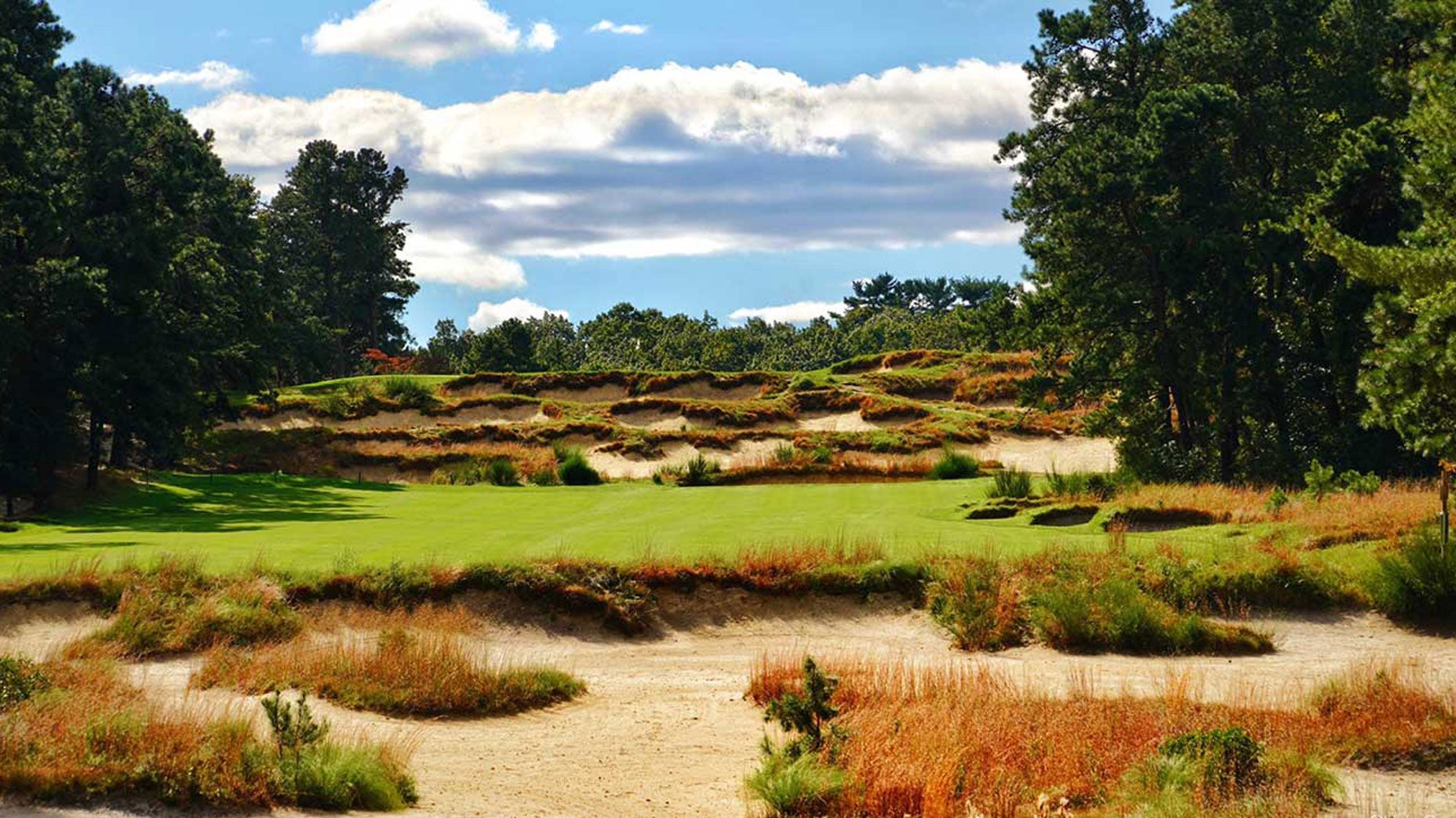Just before the turn of the 20th century, a group of wealthy Atlantic City resort owners convened and decided that they needed a place where they could send high rollers for a round of golf. Pooling their resources, they purchased a plot of land in Northfield, N.J., just across the bay from the boardwalk. Work on Atlantic City Country Club soon got underway.
Not only was the sandy site ideal for golf, but it also occupied a prime location, with end-to-end views of the Atlantic City skyline. The property was serviced by a trolly, which ran between the resorts and the course. Though the trolly itself is no longer in service, the trolly bell that alerted guests of the last train back to town still stands on display outside the clubhouse, a fitting emblem for a course that all but rings with history.
ACCC is one of the oldest golf clubs in the United States, having opened its teeing grounds in 1897. The original course, a nine-holer designed by John Reid, was altered in 1915 by Willie Park Jr., who increased the routing to 27 holes. A few years later, William Flynn and Howard Toomey trimmed the layout back to 18 holes. For nearly three-quarters of a century after that, the course remained virtually untouched, until 1999, when Tom Doak was brought on to redesign it.
In the intervening years, some things transpired. In 1901 Walter Travis won his second U.S. Amateur championship at ACCC. The club’s head pro, John McDermott, found time out from his teaching schedule to win back-to-back U.S. Opens, in 1911 and ’12. In 1948, when ACCC hosted the U.S. Women’s Open, Babe Zaharais claimed the title, the first of her three victories in the event. Future Hall of Famer Nancy Lopez finished tied for second in the 1975 U.S. Women’s Open at ACCC when she was just 17. In 1980, when the Champions Tour was formally established, its very first stop was — you guessed it — ACCC.
For much of its life, ACCC was a who’s-who hangout: Snead, Hogan and Hagen were all regulars. So was Bob Hope. In the early 1950s, while stationed nearby in the U.S. Coast Guard, Arnold Palmer would swing by to hustle members of the social elite. When Frank Sinatra wasn’t working the crowd at the 500 Club, he could often be found here working on his game.
Best golf courses in New Jersey, according to GOLF Magazine’s expert course ratersBy: GOLF’s Course Ratings Panel
A.W. Tillinghast and Pine Valley founder George Crump played regular rounds here, too. It was during a match in 1903 at ACCC involving Crump that the term “birdie” came into existence. Only in a state as golf-rich as New Jersey could a course with such a glittery history fall even slightly under the radar today.
If that history isn’t enough to pull you to the Jersey shore, the layout itself most certainly will. ACCC isn’t overly long or difficult. It’s sporty, with just the right amount of quirk and fun. While many courses have altered themselves to accommodate the modern game, ACCC has stayed true to its roots.
Credit Doak, who did a tremendous job bringing the course back into the spotlight while still preserving vital elements of its past. ACCC is semi-private, with preferred tee times set aside for members. But anyone can play it. So, dust off your hickory clubs and wool knickers and transplant yourself back to the Roaring 20s and experience this timeless masterpiece.
And keep an ear out for that trolly bell!
Need help unriddling the greens at your next round on the road? Pick up a custom Green Book from our sister company Golf Logix.











